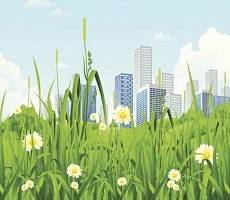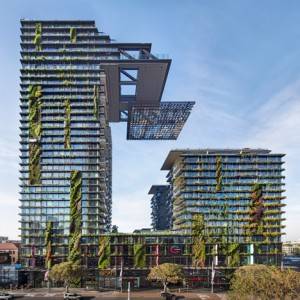February 25, 2015
Leading role for property sector in promoting ‘green infrastructure’ says UK-GBC
 The property industry can play a leading role in protecting and enhancing national features and biodiversity. That is according to a new report by the UK Green Building Council Task Group which presents the business case for “green infrastructure”, the term used to describe natural and semi-natural features ranging from street trees and roof gardens to parks and woodland. Demystifying Green Infrastructure finds that introducing green infrastructure into the built environment offers a range of business opportunities, including an increase in the value of land and property, as well as social and environmental benefits. Aimed primarily at developers and occupiers, the report also identifies risks from failing to incorporate adequate green infrastructure into projects, such as delays in planning, increased costs and reputational damage.
The property industry can play a leading role in protecting and enhancing national features and biodiversity. That is according to a new report by the UK Green Building Council Task Group which presents the business case for “green infrastructure”, the term used to describe natural and semi-natural features ranging from street trees and roof gardens to parks and woodland. Demystifying Green Infrastructure finds that introducing green infrastructure into the built environment offers a range of business opportunities, including an increase in the value of land and property, as well as social and environmental benefits. Aimed primarily at developers and occupiers, the report also identifies risks from failing to incorporate adequate green infrastructure into projects, such as delays in planning, increased costs and reputational damage.
John Alker, Director of Policy and Communications, and Acting CEO of the UK Green Building Council, said: “The property industry must step up and take a leading role in protecting cherished natural environments and reversing the loss in biodiversity that we have seen nationally.
“We have to shed the image of green infrastructure as a fluffy optional extra, an additional cost or an unnecessary  burden. There are a growing number of clients and developers demonstrating that green infrastructure is absolutely central to quality place-making, and that there is a clear business case for it. This has to become the norm.”
burden. There are a growing number of clients and developers demonstrating that green infrastructure is absolutely central to quality place-making, and that there is a clear business case for it. This has to become the norm.”
The benefits and risks can be felt across the entire building lifecycle from planning and construction to operation, and extend beyond this to include organisational reputation, staff productivity and retention, and future proofing.
The report finds that the benefits of green infrastructure include:
- potentially increased values of land and property*
- reduced installation and maintenance costs
- reduced energy/air conditioning costs through natural cooling from living walls, roofs and courtyards
- improved health and wellbeing of people.
While the risks associated with failing to incorporate green infrastructure include:
- planning permission being refused or delayed
- flooding
- loss of valuable habitat
- reputational damage through loss of client relationships/investment
The report, sponsored by Aggregate Industries, Canary Wharf Group and Skanska, sets out a number of tools that can be used to measure the value of green infrastructure – whether economic, social or environmental.
“Skanska supports this initiative since the construction industry and society depends on the services, resources and benefits that the natural environment provides and we can impact positively on these,” explained Jennifer Clark Director of Environment at Skanska UK. “The report highlights the important role we can play by championing green infrastructure and the case studies clearly demonstrate what can be achieved with joined up systems thinking and greater leadership in the subject.”
The report also includes 18 case studies highlighting good practice on green infrastructure conservation or enhancement. These include Canary Wharf’s new Crossrail station which features green infrastructure such as reed beds and water terraces (to provide improved water quality and biodiversity) and a new roof park (which offers a valuable new amenity and wildlife resource).
To read the report, click here.













